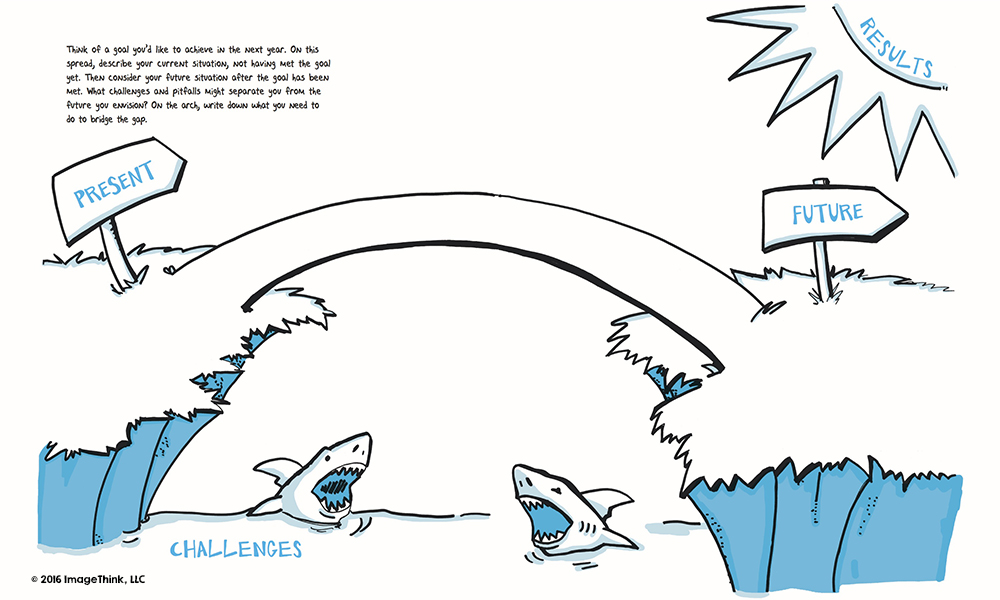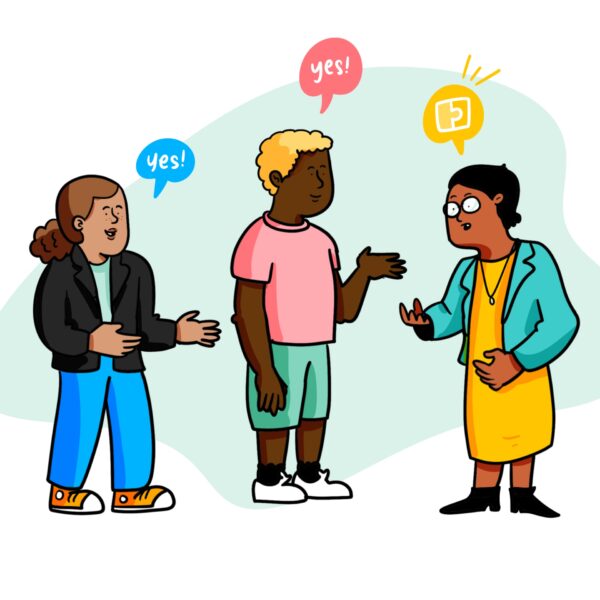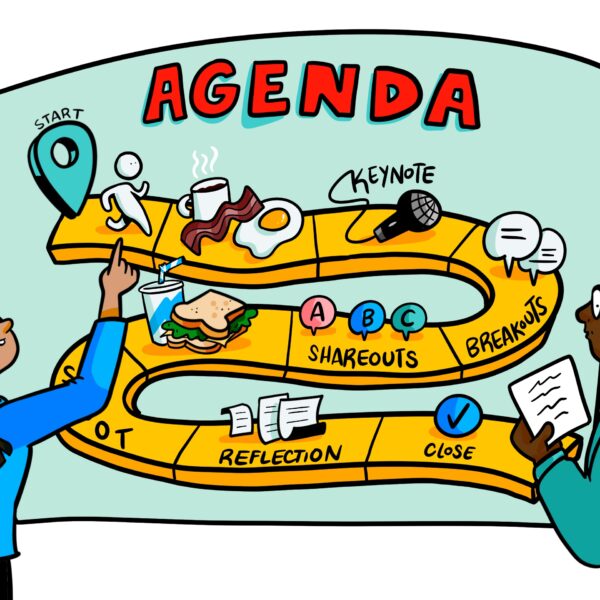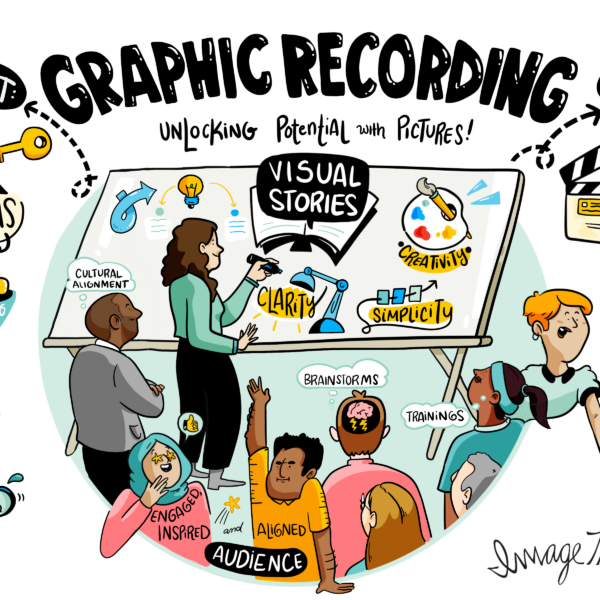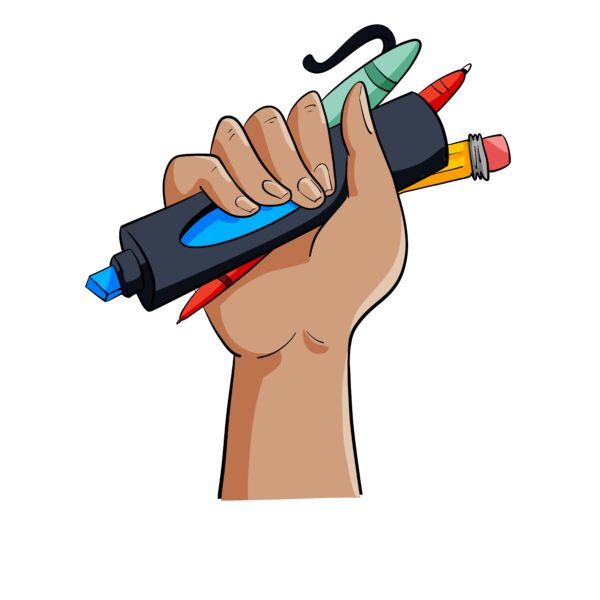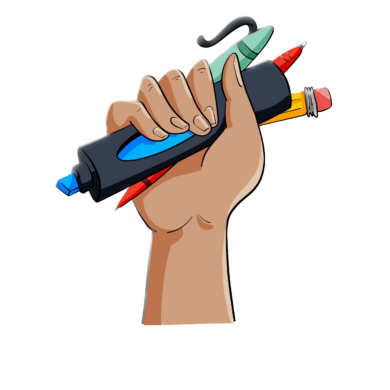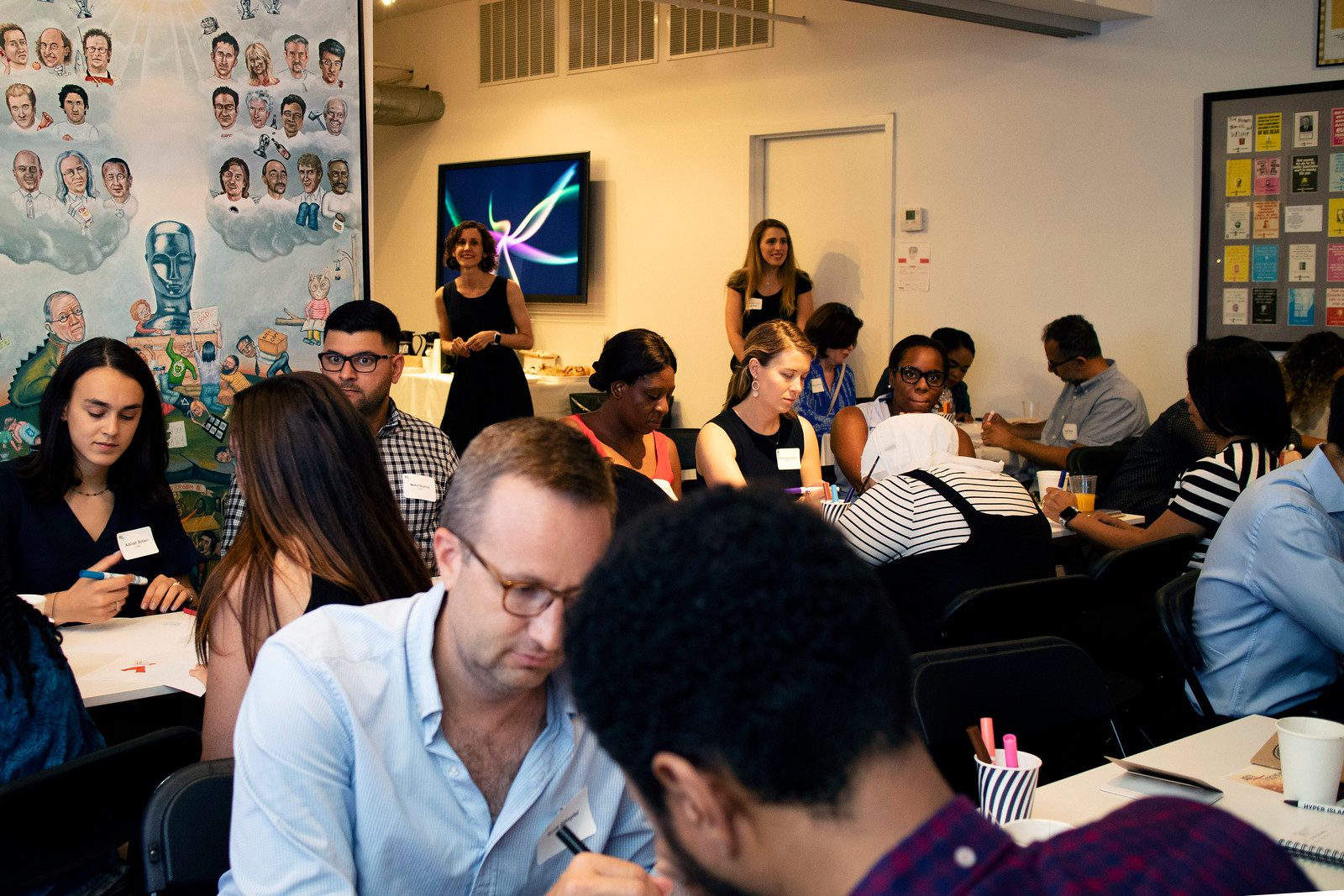
1. Graphic Recording Is More (Neuro) Science Than Art.
ImageThink workshops aren’t just about teaching your team how to draw, or why we use whiteboards instead of powerpoint. (We’ll cover that as well, but it’s not all we’ll talk about.)
On a fundamental level, our workshops fully immerse attendees in the why of working graphically. Humans are visual animals, wired to process information optically.
For instance, 30% of our neurons are devoted to visual inputs, as opposed to 8% for tactile inputs and 3% for auditory input. Visuals are wired into our very survival instincts, which explains why we see faces everywhere. Come to a workshop, and you’ll walk away with fun facts like that, as well as the answer to what a 10,000 year-old Spanish bison can teach us about brevity and clarity in communication.
2. Better Design Thinking Practices Will Help You Design Better Thinking.
At ImageThink we are big advocates of Design Thinking and evangelize applying the methodologies of Design Thinking to your meetings, big and small. Using these techniques, teams can ideate and iterate more rapidly, find more creative solutions, and be more agile.
It all starts with asking the right question. A question too narrow can limit the breadth of possible solutions. One too broad, and you’re faced with an insoluble existential problem. An ImageThink workshop will teach you to widen the frame and set an appropriate agenda, maximizing creativity without sacrificing achievability. By considering different perspectives, playing with parameters, and deconstructing / reconstructing the problem, you’ll leave with several practical tips to generate more outside-the-box ideas.
3. Even YOU Can Draw.
The truth is, whether or not you consider yourself an artist, we can teach you techniques that you can leverage to generate new ideas, and communicate them visually, regardless of drawing skill.
Just like anything else, art can be simple, or complex. The trick that graphic recorders use, is to stick to simple iconography and quickly recognizable imagery to convey complex ideas. If you can draw a circle (not even a good one, mind you), you can draw ideas, and you’ll leave with 9 ways to draw people and communicate their emotions, as well as a library of easy-to-draw icons that are equally easy-to-parse.
Contact Us to Learn More About the Power of Visuals in an ImageThink Workshop
4. Visual Metaphors Are POWERFUL. So Are TEMPLATES.
ImageThink workshops will also teach you to combine icons, and the concept of visual shorthand, to create templates for whiteboarding exercises that will help you answer complex questions. Because of how quickly the human brain processes imagery (remember the 30% from takeaway #1?), we can use these visual templates to attack problems, filling in the details as they arise in the discussion.
Whether it’s our empathy map, customer journey map, or the current state / future state template above, at the end of a workshop session, your team will have tangible, customizable, and reusable templates, and know how to choose the appropriate visual metaphor for any topic.
5. Left or Right? Creativity is Non-Partisan.
You probably grew up hearing that right-brained people were more creative, and left-brained folks were destined to be the accountants of the world. Contrary to this theory, at ImageThink, we show that creativity is democratic.
By combining all the techniques we’ve discussed, leveraging visuals, asking the right question, using simple iconography and templates, you’ll encourage everyone on your team to stand up and participate. And when multiple people and perspectives are focused on a single challenge, you may be surprised where the winning ideas come from.
6. Alignment + Assignment = Agile
Tips, tricks, and takeaways are all good. And while our workshops can be fun, team-building exercises, the real value comes when the rubber meets the road. Before we wrap up an ImageThink workshop, we’ll share with you all the ways that you can utilize the visual assets after the meeting ends, including using your drawings themselves as a way to assign next steps and responsibility.
The process of thinking together visually encourages alignment – everyone in the room is invested in what is up on the board – and offers the meeting leader clear, tangible images to point to when assigning tasks. With clearly illustrated goals, action steps, and owners, your team can move quickly on your next project, and the good ideas that come out of your meetings won’t be lost.
7. You Can Learn a Lot From a Self-Portrait.
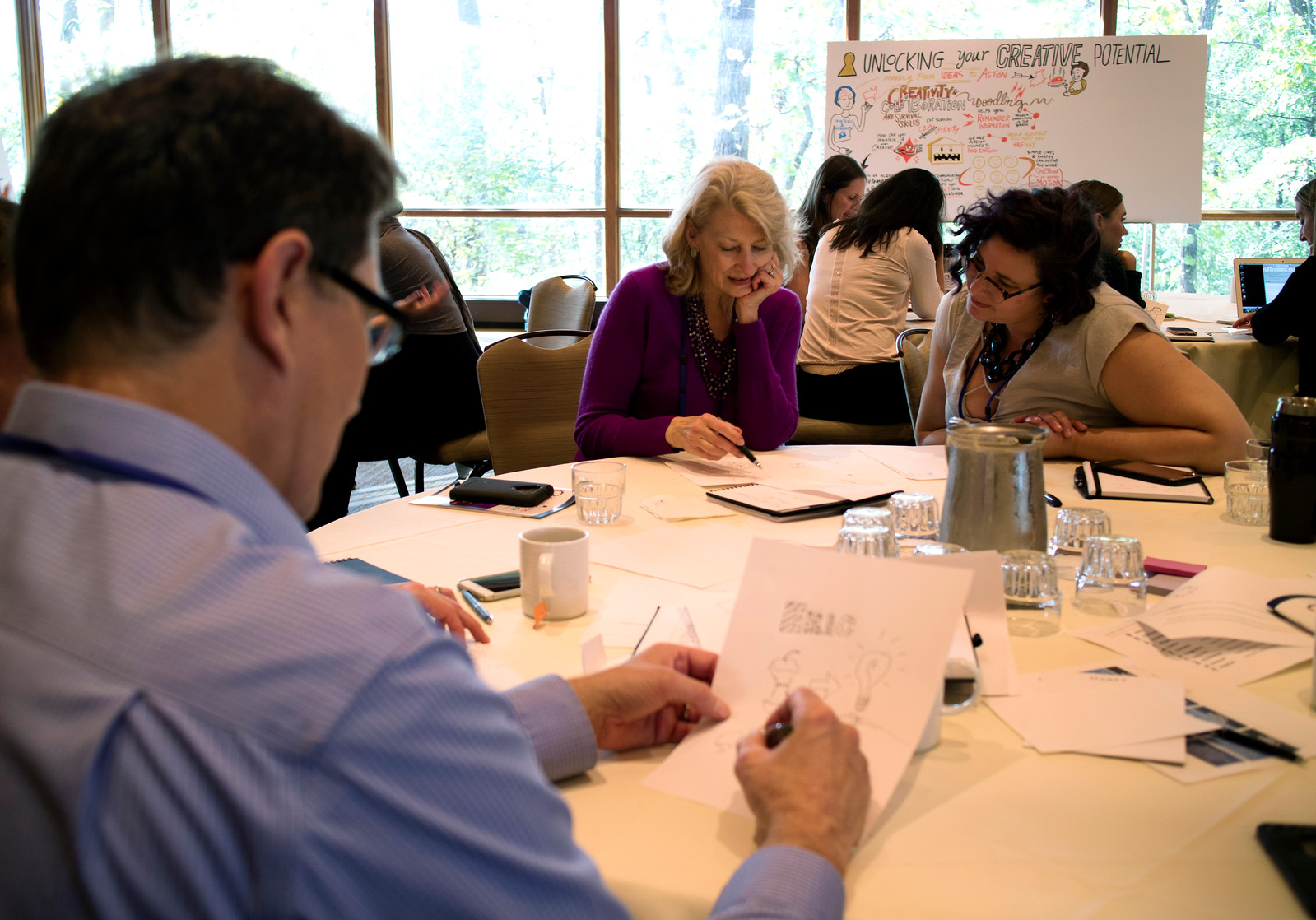
By now, whether from this or one of our previous posts, you know that ImageThink believes fully in getting people on their feet and putting markers in their hands. The best way to think and learn is by immersion.
Through the course of one of our workshops, you’ll apply the techniques we are teaching to create a visual bio of yourself. We’ve seen a lot of personal bios in our time doing this, all of varying degrees of artistic skill. One thing all visual bios had in common though, was that through their very creation, the creator learned about how he or she thinks, and how he or she sees themselves.
Plus they’re fun, and you can stick them on the office fridge.
Contact Us to Learn More About the Power of Visuals in an ImageThink Workshop
